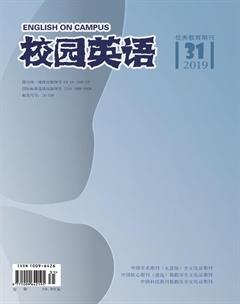Reading Emotions Between Lines
【Abstract】Recalling the Plum Blossom is a famous and beautiful poem written by Li Shangyin, a well-known poet in Tang Dynasty. Many people critique this poem by involving the poets personal experiences, regarding the plum blossom as a symbol of the author. The author tries to appreciate it from the New Critique perspective, reading emotions between lines.
【Key words】Recalling the Plum Blossom; Li Shangyin; New Critique; Close Reading
【作者简介】刘晓连(1982-),女,汉族,河北定州人,西北大学现代学院基础部讲师,硕士,研究方向:翻译研究。
1. Introduction
When given a poem, different readers contribute different meanings to it by reading meanings beyond it, or in it. In nature, there is no right or wrong. When one is supposed to be right, the other would be wrong. Recalling the Plum Blossom(《憶梅》) is a famous and beautiful poem written by Li Shangyin, a well-known poet in Tang Dynasty. Here the author would try to re-critique this poem from the New Critic Perspective.
2. Re-Critique of Recalling the Plum Blossom from the New Critique Perspective
2.1 The Theory of New Critics
New Critics assert that a poem has ontological status. To interpret a poem is more than an expression of the authors experiences or emotions. Liu Xuekai critiqued this poem by involving the poets personal experiences, regarding the plum blossom as a symbol of the author. According to the New Critics, he has committed the error of Intentional Fallacy, for his reading meanings only from Li Shangyins personal experiences. The New Critics maintain that as an art craft, the poems meaning resides in the poem itself, having nothing to do with the author, the historical or social context, or event to the reader. Besides this point, to the New Critics, a poems interpretation is not equal to a mere paraphrased version of the text, if is, an erroneous belief the Heresy of Paraphrase would be labeled.
2.2 Appreciation of the poem from the New Critique Perspective
Recalling the Plum Blossom is a Five-character-quatrain. It is a poem rich in musical sounds, tonal patterns, by following the “平” (ping, which means level) and “仄” (ze, which means oblique) tones: in each line, two or three characters of “平” tones alternates with another two or three ones of “仄” tones. The second and fourth line have the opposite “平” and “仄” tones with first and third lines, but the second character in the third line should have the same tones with the second character in the second line, just as the following shows:
||_ _ _,_ _ |||._ _ _||,|||_ _ .
In the first line, “定定”(ding ding) means to stay without removing any more. By repeating the “仄” tone, the meaning of “staying” can be reinforced. In the same way, “依依”(yi yi) in the second line, which means “be reluctant to leave”, enhances the narrators longing for the beautiful sceneries in spring. The first two lines present us a picture that the narrator has to live far away from the hometown, and while facing the beautiful picture in spring, he or she develops a desire for the beauties.
We can see the paradox: in front of the flowers and trees full of life and beauty, the narrator cannot help developing a sense of longing for the beauties. But the narrators presents a transformation by recalling the plum blossom to which he or she shows the hatred. It can be inferred that the very deep emotions the narrator bears towards the plum blossom is a kind of complicated feelings. There is kind of regret, or even love in it, rather than hatred. It is the plum blossom that predicts the lovely springs coming. So the plum blossom is a noble and beautiful creature to the narrator. Facing the prosperous spring, there would be perfection if the plum blossom did not fall. Here it echoes the title.
3. Conclusion
In fact, this poem is a well-organized unity, which contributes to the whole meanings. The first two lines describe the scenes of “the remotest corners of the world” where the narrator stays. The following two lines depict the picture of plum blossom. So the spring image is associated to the externally happy life far away from hometown. The plum blossom image is associated to the hometown presenting the narrators deep and unexpressive emotions. As the former analysis shows, in such a concise poem, every character has been well chosen and arranged to contribute to the whole meanings.
References:
[1]劉学锴.唐诗鉴赏辞典[M].上海:上海辞书出版社,1983.
[2]李啸石.诗词入门[M].乌鲁木齐:新疆人民出版社,2001.
[3]赵一凡.西方文论关键词[M].北京:外语教学与研究出版社,2017.

